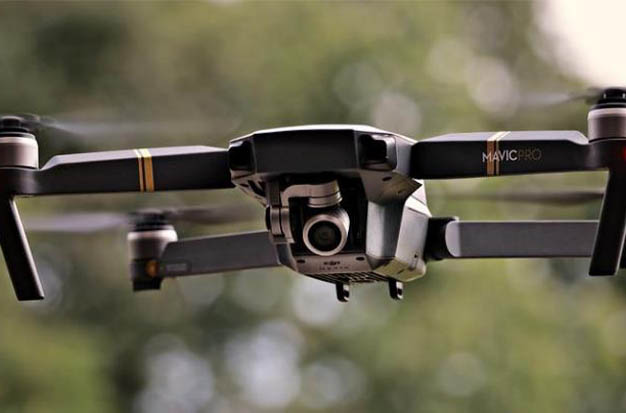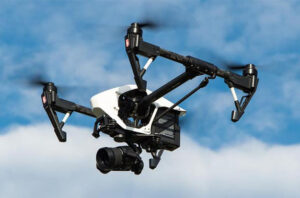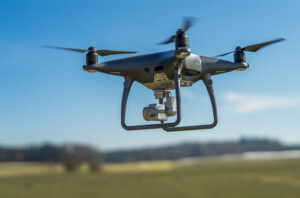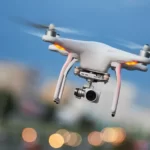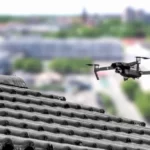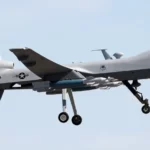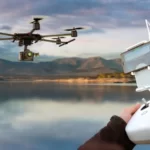Are you considering purchasing a drone but finding it difficult to comprehend the various pricing ranges? This article includes a price breakdown for drones as well as a wealth of information to get you started with aerial recording.
Table of Contents
What Is a Drone?
Unmanned aerial vehicles (UAV), commonly referred to as drones, come in a variety of sizes and designs and are used in an increasing number of fields and sectors. The general consensus is that drones are unmanned flying objects that are piloted by humans. This is no longer totally accurate, though, as drone technology has advanced. Underwater UAVs, autonomous, AI-powered, and even self-flying drones are now included in the definition of the word.
In fact, both experts and amateurs have adopted this cutting-edge technology for uses in everything from photography and video to inspection, racing, delivery, and transportation. Drones can now be faster, bigger (or smaller! ), smarter (using artificial intelligence), and able to carry heavy payloads thanks to technology breakthroughs.
How Much Does a Drone Cost?
First-Time Pilots and Practice Drones – Under $100
We always advise you to start out by purchasing a cheap drone. Regardless of your long-term drone objectives, we believe that everyone should fly a $20–$30 toy drone as their first drone. Learn how everything works, gain a feel for how the controls function and experience your first few crashes with the least amount of money damage possible.
Your Second Drone and Entry-Level Racing Drones – Under $250
We suggest a drone in the $100–$250 price range if you want to advance your general piloting abilities or begin participating in drone racing. These drones will be capable racing machines for racers, but they won’t be as quick, feature-rich, or dependable as the more expensive racing machines. The average pilot will experience their first GPS-enabled flight and advance to a camera for fpv flights.
Entry-Level Camera Drones and Full Racing Drones – Under $500
This is where the beginner in aerial photography should begin in order to shoot quality pictures from the air. Drones priced between $250 and $500 will provide a respectable smartphone-caliber photographic experience. The camera gimbal will have more value than the camera sensor, which may be passably capable. Drones act violently by nature; a camera that isn’t stabilized will produce jittery, blurry, and bizarre jello-like effects in films. Even with a fast shutter speed, decent pictures can still be taken, but watching unstabilized footage is depressing.
Camera drones in this category will typically include a 12MP, 1/2.3-inch camera sensor with a fixed lens and 1080p, possibly up to 2.7K video resolution.
Mid-Tier Consumer Camera Drones – Under $1,000
We respect the products in the $500 and less price category, but as you bump up your spending a little, your aerial captures start to improve dramatically. The 3-axis stabilized camera gimbal will be included on practically all of these more expensive drones, to start. The 1/2.3-inch camera sensor will still be used by older drones in this price range, although newer models have a 48MP 1/2-inch sensor. These sensors take 12MP photos and 4K videos using pixel binning, which is far better than the smaller sensor. Optics are one thing, but you can also locate more powerful computers and possibly more expensive software to process your photographs more thoroughly. Enjoy HDR pictures, for instance, which provide images with far superior white balance.
Along with the upgraded camera, you can anticipate better image capture options, more autonomous flight functions, and increased flight safety. At the very least, drones in the $500–$1,000 price range will have forward obstacle avoidance sensors. Many, if not more, will include downward sensors as well.
High-End Consumer Camera Drones – Under $1,800
You should plan to pay at least $1,800 if you want to experience the best consumer camera drones available. Drones with 21MP, complete 1-inch camera sensors, more obstacle avoidance sensors, and improved internal processors are available in this price range. While the majority of drones in this category still record video in 4K, more recent models are beginning to record video in 6K and even 8K.
The bigger size of these drones makes them difficult to move, but it also allows you to utilize them to transport heavier objects like fishing lures or life-saving medical supplies.
Professional Camera Drones – $1,800 and Up
Do you represent a seasoned videographer at work? You will shop here for your upcoming drone. Some of the drones in this category come with built-in cameras, but for the most part, these devices are only flying platforms for your professional camera rigs. The majority of them will be highly expensive, big drones that can transport not only bulky equipment but also all the remote controls for those cameras.
Commercial Drones – $2,000 and Up
Since many drones can serve both commercial and professional goals, there is a fine line between them. The difference lies in the payloads. Drones designed for inspection services, mapping, product deliveries, and even passenger flying come to mind when we talk of commercial drones. Many commercial drones are equipped with infrared cameras. Site inspections and search and rescue missions benefit greatly from the use of thermal imaging.
Most commercial drones need to be larger aircraft that can carry the necessary payloads as well as safety equipment like parachutes and extra lights because of the increased safety standards for many job sites.
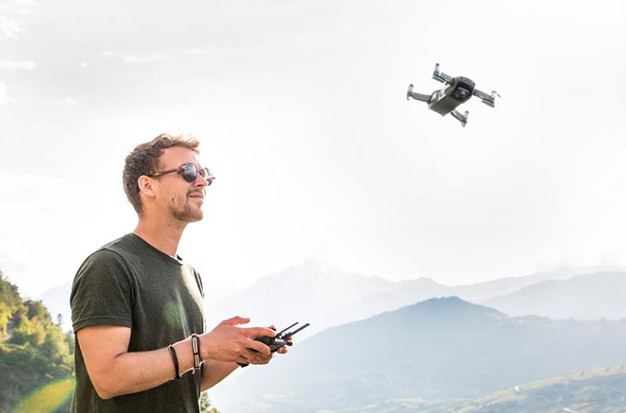
How to Select the Right Drone for Your Needs
You need to pay close attention to a number of important considerations while choosing a drone. These consist of:
Range and Flight Time
Most drones only have a short flight time. In contrast to commercial drones, which can fly for up to 45 minutes or more, toy and racing drones typically have a maximum flight time of 10 minutes.
The drone’s range and flight time can still be impacted by other elements such as the battery, weather, connectivity, and more.
Weight and Size
Racing, toy, and small drones typically have a maximum height of 11 inches (30 cm) and a maximum weight of 0.55 lbs (500g).
However, as commercial drone technology develops, drones used for more sophisticated uses grow in size and weight.
Remote Management
Since you operate a drone using this, it is an essential feature. The controllers resemble those used to operate remote-controlled toys.
Additionally, the drone pilot can control the device remotely using the controller rather than having to be present with the drone. They come in a variety of sizes and forms as well. Not to mention that many can use smartphones and tablets, some even have LCD screens.
The controller should ideally have four channels or more. Furthermore, the majority of drone controllers operate at a 2.4 GHz frequency. Drones with longer ranges employ controllers that operate at lower frequencies. RC transmitters are Wi-Fi capable as well.
In addition to a drone controller’s technological features, the pilot should get one that is ergonomic, cozy, and simple to use. The controller’s buttons and knobs ought to be comfortable in the hands and have sufficient sensitivity.
Purchase lightweight controllers to prevent hand fatigue, especially while flying a long-range drone.
Speed
Numerous variables, like the drone’s weight, size, and engine power, affect the drone’s speed.
Large professional and camera drones have a top speed of 30 to 50 miles per hour. Generally speaking, the heavier they are, the better they are able to handle flights, especially in bad weather to accomplish a longer range and flight time.
On the other hand, the lightweight racing drones are the quickest, capable of speeds above 100 mph.
Portability
Depending on their size and type, drones are typically portable. Drones used for racing, hobbies, and toys are portable and light. Others may feature an integrated, uncomplicated design for simple transportation.
The premium camera drones include high-quality carrying cases. Other drones, however, include folding arms and propellers that can be retracted to let them fit in a small pack.
FAQ:
Do I Need a License to Fly Any of These Drones?
Yes, the basis for your drone pilot license in the US is your flight operations, not your drone. Hobby pilots must obtain their TRUST certificate before taking off, and if you plan to be paid in any way for your flight—including through direct payment or the online sale of your photos—you must be Part 107 certified and follow its regulations.
Should I Buy a Used Drone?
Purchasing old drones is acceptable as long as you shop carefully. You probably won’t get warranty coverage on a used drone because the majority of drones have limited warranties that start from the time of initial purchase and others are non-transferable between owners. The machine must then be thoroughly inspected before you buy it. While we hope the seller will disclose any damage or flaws, it is ultimately your obligation to obtain insurance before you buy.
